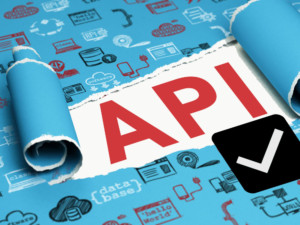One conversation that is critical in today’s ecosystem of integrated platforms; is the Application Programming Interface (API) checkbox. Here is how a typical conversation on this topic is between a brokerage and their vendor partner.
Brokerage:Does your platform have an API to support integration with other tools we support with our agents?
Tech Company:Yes! We have an Open API and we integrate with thousands and thousands of applications (a little exaggeration 😉 ).
 Brokerage:Cool! (marking off the checkbox on the list of requirements)
Brokerage:Cool! (marking off the checkbox on the list of requirements)
I once too fell victim to this same scenario. When I reviewed an API against our business process workflow and rules, I found gaps between functionality of API and my needs. I started to question – in detail – how does their API work with my other partners.
Example of a process requirement with an API.
The process to onboard, offboard, and move staff and agents is an identity and access management (IAM) challenge for any organization. The goal is to use an in-house application to centrally manage IAM. One place to make IAM changes and distribute the account information to many other applications. A process which exploits the benefits of using an API.
What became a challenge is when the technology company’s API only supported reading account information. There weren’t any methods available to create, decommission, or edit an account profile record.
The lesson learned was easy, Open API doesn’t mean full functionality to support the business. It only means API accessibility is available to the public.
Steps to prevent learning this lesson the hard way.
Documentation of internal process workflow and rules.
A clear understanding of your process workflows and rules is necessary. Create a ‘living’ library of how your business works (ie…What is the workflow when an Agent turns in a contract to the office and when it is processed to close?). The library is called ‘living’ because documents are editable as process changes and creating an archive of past processes. Potential cost-effective tools to create a library are SharePoint Online with Microsoft Office 365, Google G-Suite Sites and Drive, or using Wiki plugins on a WordPress website that is secured within the internal network.
Deep dive into API integration with your partners
Awareness of how deep and rich the integration between two partners is essential to a successful project. You will be surprised on how many integrations only supply Single Sign-on and/or read capability of information. Don’t be afraid to ask for integration documentation.
A deep integration includes information that travels between systems and has triggers for actions to take place. API’s are great when an application or systems makes a request for information, but they are not built with triggers for when information does change. Therefore, webhooks should be part of your vernacular when reviewing partner integrations.
An uncomplicated way to explain Webhooks is they can perform an action when certain criteria are met, or scenarios take place. When data changes or a series of actions have completed, a webhook initiates their action.
An example using our onboard process above, a webhook would send an email to the agent to let them know of their access to the system and activates another process to create online marketing material for the agent.
Zapier.com service of system integrations is like the big-daddy of all webhooks.
Upstream
A lot has been written about Upstream this week and the rhetoric reeling is biased and self-serving. If there is one industry initiative which can help brokerages of all sizes, it is Upstream.
Over the last 7 months, I have heard this a million times from managers, agents, staff and brokers. How can we enter data only once and let the systems transfer the information to a marketing platform, my MLS CRM, my personal CRM, my financial system, my seller and buyer tools, my CMA, my online reputation tool, my HR system, my… get the message?
Today, we need manual input of information into a multitude of systems; a practice in real estate which is consuming valuable time and resources. Oh, and there is one other important fact – a significant loss of data quality occurs after every keystroke.
Welcome to Upstream! Upstream is the glue which allows a brokerage to have one central location to perform data input – manually or through an API – and it holds more than just listing data. It gives us the ability to tell a new vendor if they need listing, office, agent or staff data for their product. Go to Upstream. Done!
RESO Certification
Ask your vendor partners to be certified to the latest RESO Data Dictionary and Web API. Certification does serve as an insurance of a deeper and rich integration with the industry standard of 1247 fields and 2109 lookup fields with values. If there are additional data fields in your organization that are not covered in the RESO Data Dictionary, you need to join the RESO Broker Advisory Group. Lend your voice as RESO is always enhancing the data dictionary to be more robust for brokerages.
Documentation of your current workflow and process takes time and effort. If you are planning to modernize your technology, now is the time to create the necessary documentation to fairly evaluate API integrations with your existing and future technology partners, including Upstream.
The WAV Group has experience in documenting and creating efficient workflow process when implementing new systems. WAV Group aids brokers to use Upstream with their internal systems. Contact Victor Lund, Marilyn Wilson, or David Gumpper to schedule some time. Firms may schedule a private WAV Group overview for their executive team or board by contacting Camilla Harvey at Camilla@WAVGroup.com.





Waiting on documentation and sandbox credentials.
As “vendors” are found in at least as many sizes/shapes and abilities as Realtors/Brokers, hopefully we’ll not all have to invent our own “middleware” in order to accomplish useful things. That will take the early efforts in a direction of unintended consequences.
Please, help us help you to get brokers on board and doing something meaningful — it’s not going to be a sprint — few of them “get it.”—yet. It’s going to take a balance beam walk by UpStream imagineers to reign in cowboys, and instill some “Pragmatics” into educating brokers and their constituents. There’s a univewrse of interesting ideas and innovations lying, not under the lamppost, but in the dark bushes tended especially by small vendors and innovators. (By the way, I advise adjusting this form — larger text and higher-contrast. Quite difficult to fill out on a desktop workstation.